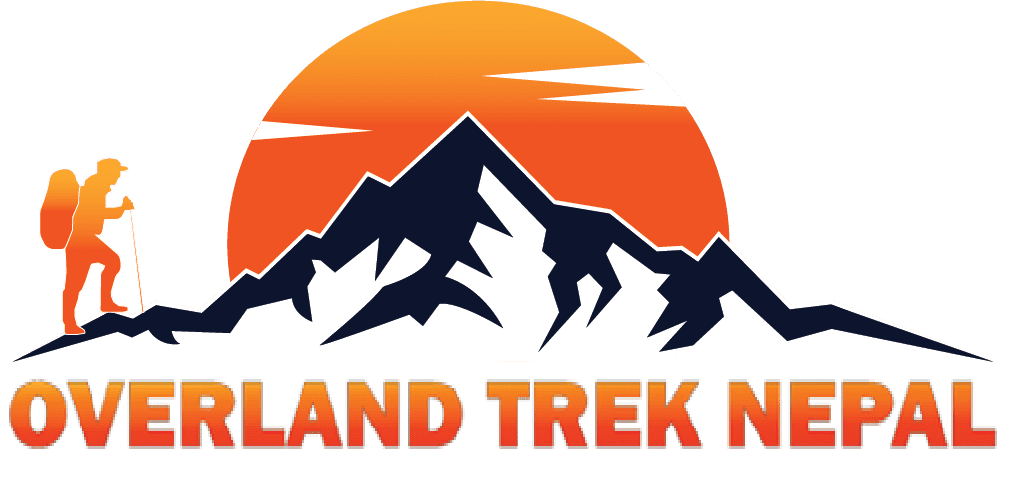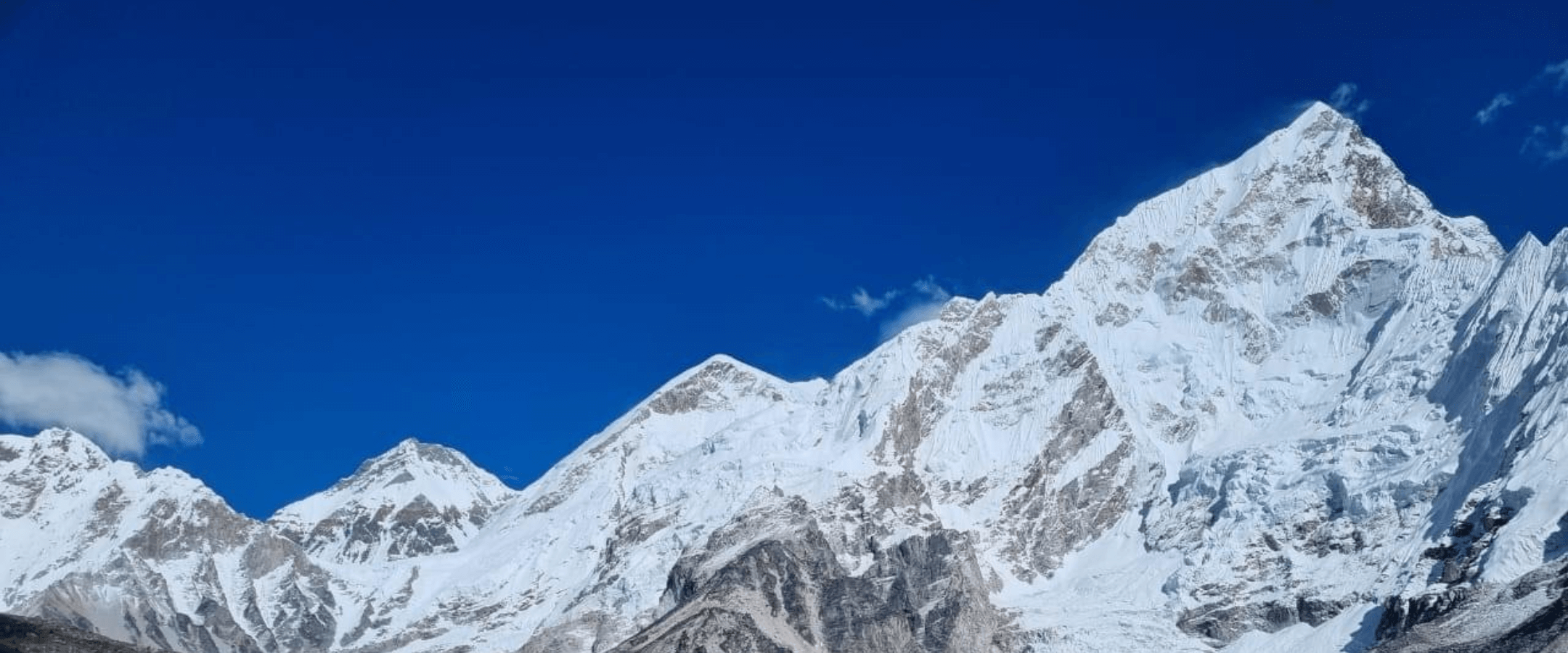Are you planing to Explore Nepal’s Famous Peaks with Overland Trek Guide? If yes come with us we are ready to serve you any where any time. However, Nepal, the land of the Himalayas, is home to some of the world’s most iconic mountains and peaks. Each of these majestic giants has its own unique history, cultural significance, and climbing challenges.
In this Explore Nepal’s Famous Peaks with Overland Trek Guide blog, we’ll delve into the stories and details of some of Nepal’s most famous peaks, including their meanings, heights, locations, best climbing seasons, difficulty levels, and the necessary preparations for a successful ascent. We’ll also explore the culture, religion, and lifestyle of the local people in these regions. Finally, we’ll explain why booking your expedition with Overland Trek Nepal is the best choice for an unforgettable adventure. However, here are some mountain details through Explore Nepal’s Famous Peaks with Overland Trek Guide.
1. Mount Everest (Sagarmatha)
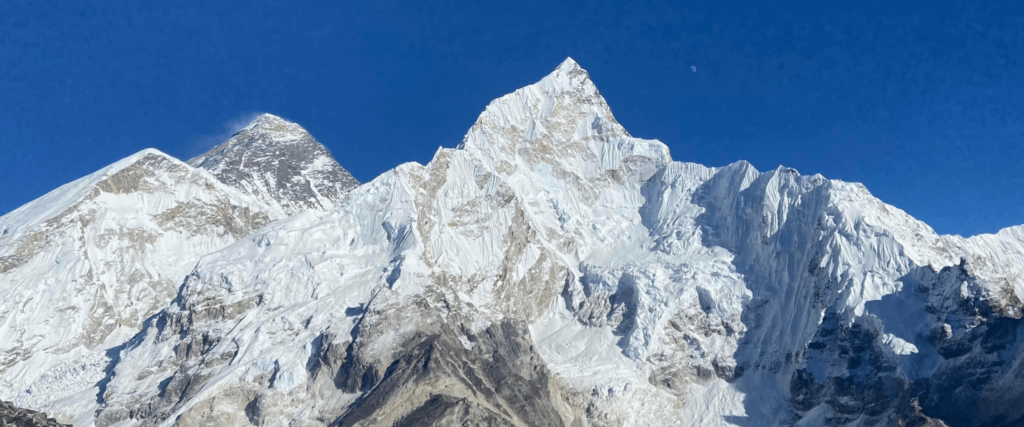
Height: 8,848.86 meters (29,031.7 feet)
Location: Solukhumbu District, Nepal
Best Season to Climb: Late April to early June, and late September to early November
Difficulty: Extremely challenging, requiring advanced mountaineering skills and high-altitude experience
Historical Story and Meaning
In Explore Nepal’s Famous Peaks with Overland Trek Guide Mount Everest, known as Sagarmatha in Nepali and Chomolungma in Tibetan, is the highest peak in the world. The name Sagarmatha means “Goddess of the Sky” in Nepali, reflecting the mountain’s towering presence. Sir Edmund Hillary and Tenzing Norgay made the first successful ascent on May 29, 1953, marking a historic moment in mountaineering history.
Required Documents
- Passport with a minimum validity of six months
- Nepal visa
- Climbing permits (issued by the Department of Tourism, Nepal)
- Insurance policy covering high-altitude rescue and evacuation
Required Training
For beginners: Basic mountaineering courses, including ice climbing and glacier travel For expert climbers: Advanced high-altitude mountaineering training, endurance training, and acclimatization exercises
Local Culture, Religion, and Lifestyle
The Local people, renowned for their mountaineering skills, inhabit the Everest region. Their culture is deeply influenced by Tibetan Buddhism, with colorful monasteries and prayer flags dotting the landscape. Sherpas lead a traditional lifestyle, practicing agriculture and animal husbandry. Festivals like Losar (Tibetan New Year) and Dumji are celebrated with great fervor.
2. Annapurna I
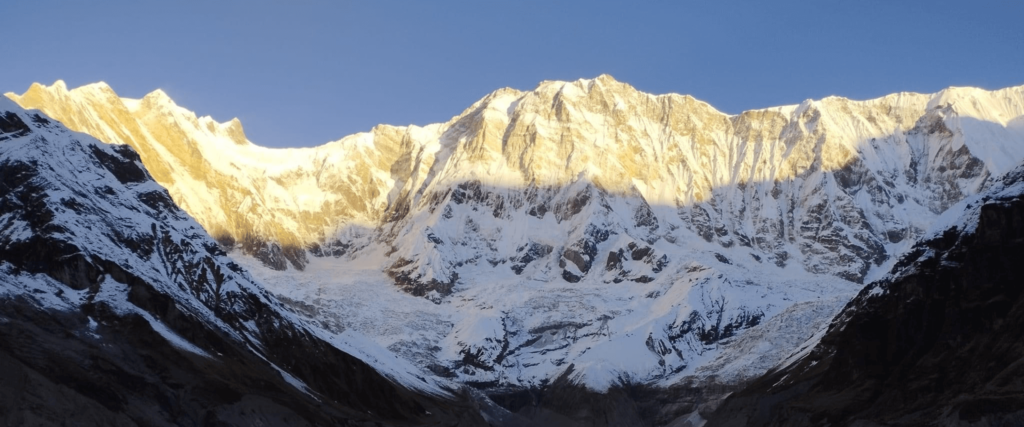
Height: 8,091 meters (26,545 feet)
Location: Annapurna Massif, Gandaki Province, Nepal
Best Season to Climb: April to June, and September to November
Difficulty: Highly challenging, with significant avalanche risk and technical climbing sections
Historical Story and Meaning
Also in Explore Nepal’s Famous Peaks with Overland Trek Guide Annapurna I, part of the Annapurna Massif, is the tenth-highest peak in the world. “Annapurna” means “Goddess of the Harvests” in Sanskrit. The mountain was first climbed by a French expedition led by Maurice Herzog and Louis Lachenal on June 3, 1950, marking the first successful ascent of an eight-thousander.
Required Documents
- Passport with a minimum validity of six months
- Nepal visa
- Annapurna Conservation Area Permit (ACAP)
- TIMS (Trekkers’ Information Management System) card
Required Training
For beginners: Basic mountaineering courses, rock climbing, and snow trekking For expert climbers: Advanced technical climbing, crevasse rescue, and avalanche safety training
Local Culture, Religion, and Lifestyle
The Annapurna region is home to the Gurung and Thakali communities. The Gurungs are known for their rich cultural heritage, including traditional music and dance forms like Ghatu and Sorathi. The Thakalis are famous for their hospitality and delicious cuisine. The region is dotted with ancient Buddhist monasteries and Hindu temples, reflecting a harmonious blend of religions.
3. Mount Lhotse
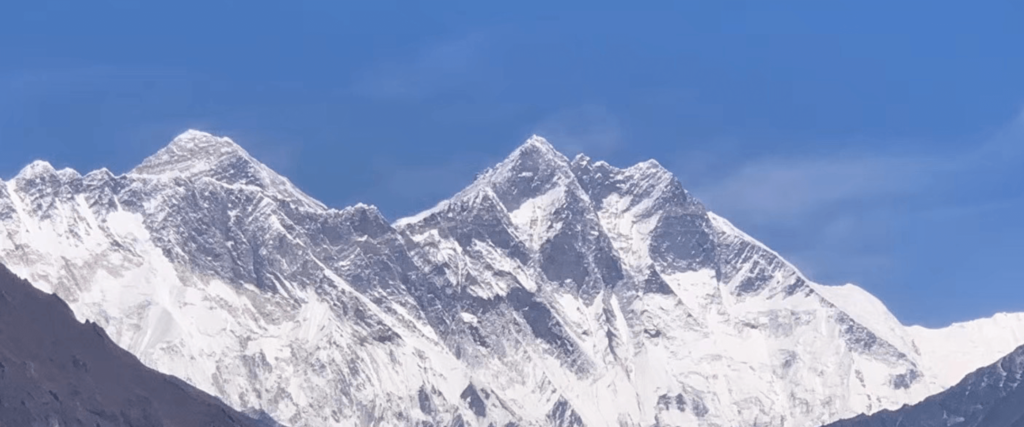
Height: 8,516 meters (27,940 feet)
Location: Solukhumbu District, Nepal
Best Season to Climb: Late April to early June, and late September to early November
Difficulty: Extremely challenging, with technical ice and rock climbing sections
Historical Story and Meaning
In Explore Nepal’s Famous Peaks with Overland Trek Guide Lhotse, meaning “South Peak” in Tibetan, is the fourth highest mountain in the world. It is connected to Everest via the South Col. The first successful ascent was made by a Swiss team led by Ernst Reiss and Fritz Luchsinger on May 18, 1956. Lhotse is known for its dramatic South Face, one of the steepest faces in the Himalayas.
Required Documents
- Passport with a minimum validity of six months
- Nepal visa
- Climbing permits (issued by the Department of Tourism, Nepal)
- Insurance policy covering high-altitude rescue and evacuation
Required Training
For beginners: Basic mountaineering courses, ice climbing, and altitude acclimatization For expert climbers: Advanced technical climbing, mixed ice and rock climbing, and endurance training
Local Culture, Religion, and Lifestyle
Similar to Everest, the Lhotse region is inhabited by the Local people. Their lives revolve around their faith in Buddhism, with numerous stupas and chortens marking the landscape. The Sherpas celebrate Mani Rimdu, a significant Buddhist festival, with masked dances and rituals at the Tengboche Monastery.
4. Mount Manaslu
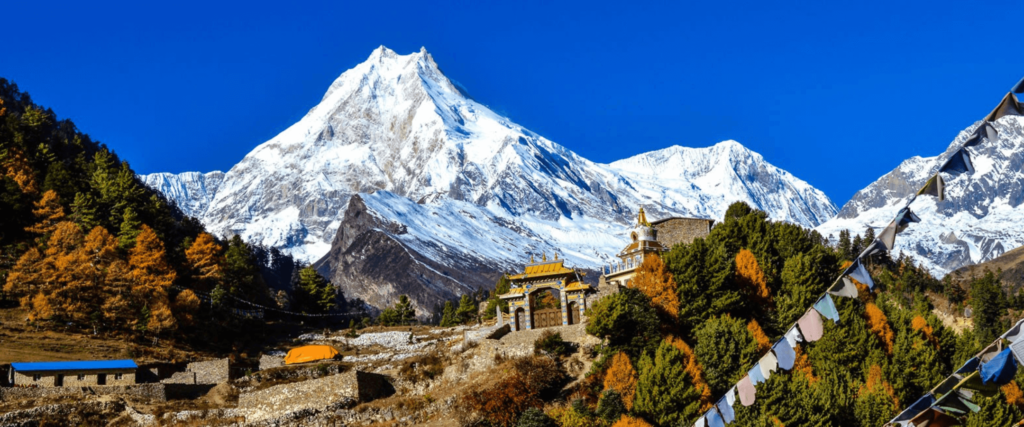
Height: 8,163 meters (26,781 feet)
Location: Gorkha District, Nepal
Best Season to Climb: March to May, and September to November
Difficulty: Very challenging, with crevasses, icefalls, and risk of avalanches
Historical Story and Meaning
In Explore Nepal’s Famous Peaks with Overland Trek Guide Manaslu, derived from the Sanskrit word “Manasa,” means “Mountain of the Spirit.” It is the eighth highest peak in the world. The first ascent was made by a Japanese expedition led by Toshio Imanishi and Gyalzen Norbu on May 9, 1956. Manaslu is revered by the local people, and climbers are encouraged to respect the mountain’s spiritual significance.
Required Documents
- Passport with a minimum validity of six months
- Nepal visa
- Manaslu Conservation Area Permit (MCAP)
- Special restricted area permit
Required Training
For beginners: Basic mountaineering courses, snow and ice climbing, and high-altitude acclimatization For expert climbers: Advanced technical climbing, glacier navigation, and crevasse rescue training
Local Culture, Religion, and Lifestyle
The Manaslu region is predominantly inhabited by Tibetan-origin people who practice Tibetan Buddhism. The area is known for its remote villages, ancient monasteries, and rich cultural traditions. The Tsum Valley, in particular, is renowned for its unspoiled Buddhist culture and is often called the “Hidden Valley.”
Booking with Overland Trek Nepal
Location: Thamel, Kathmandu, Nepal
Why Choose Overland Trek Nepal:
- Experienced and certified guides
- Customized itineraries
- Comprehensive safety measures
- Cultural immersion experiences
- Sustainable and eco-friendly practices
Required Documents for Booking
- Copy of passport
- Passport-sized photos
- Insurance policy details
- Emergency contact information
Required Training for Trekkers
For Beginners:
- Basic mountaineering courses
- Physical fitness training
- Altitude acclimatization
- Basic first aid and emergency response
For Expert Climbers:
- Advanced technical climbing courses
- High-altitude training
- Endurance and strength training
- Advanced first aid and rescue techniques
Cultural Insights
Explore Nepal’s Famous Peaks with Overland Trek Guide is The regions around these mountains are rich in cultural diversity. Each area has its unique customs, religious practices, and way of life. Whether it’s the Buddhist monasteries in the Everest and Lhotse regions, the Gurung and Thakali traditions in the Annapurna area, or the Tibetan Buddhist heritage in the Manaslu region, trekkers can immerse themselves in local cultures and gain a deeper understanding of the Himalayan way of life.
Conclusion
Nepal’s world-famous mountains and peaks offer not only breathtaking landscapes and thrilling climbing experiences but also a rich tapestry of history, culture, and spirituality. Choosing the right trekking company is crucial for a successful expedition, and Overland Trek Nepal Pvt. Ltd. stands out as the best option. With their experienced guides, personalized service, and commitment to safety and sustainability, Overland Trek Nepal ensures that your adventure in the Himalayas is both memorable and fulfilling. Book your trip with Overland Trek Nepal today and embark on an unforgettable journey through the majestic peaks and vibrant cultures of Nepal. Whether you’re a beginner or an expert climber, Overland Trek Nepal will guide you every step of the way, making your Himalayan adventure truly extraordinary.
